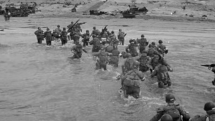Warface – First Look [2017 UPDATE]
Warface has been around for a few years now, and has seen a ton of changes since James originally provided coverage on it. Since this is my first time with the game though, everything from this point forward will be from a new player perspective.
I’m Colt from MMOHuts.com and here’s our first look at Warface.
From a gameplay perspective, Warface doesn’t bring a lot of new things to the table. It is a standard, tactical, class-based shooter. Players fight in a series of PVE missions and raids as well as PVP modes to gain experience, rank up, and unlock new gear and cosmetics for their characters. There are small things sprinkled through the experience that help Warface stand out though. One of my favorites is the ability to help your teammates reach ledges that would be too high to jump up to. One of you can crouch before these marked areas and hoist the other up. Once one of you is up, you turn and pull the other up to the ledge as well. This made reaching new areas fun, and helped give a sense of cooperation beyond shooting at the same guys as your friend.
While not as visually pleasing as Battlefield 4, Warface is still very crisp-looking. Models have a good level of detail and the great lighting effects help everything to pop a bit more. During most of the game-modes, you’ll pick one of four classes, each with its own strengths and weaknesses. Establishing these differences is where Warface shines. The game introduces you to them through a series of very short but well-thought-out tutorials as you unlock the classes. It also does a fantastic job of making each class feel separate and important. Warface emphasizes team composition for both PVE and PVP, and finding the right class for you and the right mix of classes is critical.
Warface’s classes break down like this:
Rifleman – Riflemen are the assault class. They use mid to long range assault rifles and hand-guns. Unlike other shooters, the Assault class also carries ammo cases which restore ammo to yourself or allies. Since enemies don’t drop ammo, you’ll want to have at least one Rifleman on the team.
Medic – The medic uses shotguns and pistols, which leaves them nearly useless at range. They make up for this by having a med-kit which can heal themselves and allies. They also have a defibrillator that can revive recently downed allies if used quickly enough. On the normal and higher difficulties, not having a medic is suicide.
Engineer – The Engineer is the most mobile of the classes. They use SMGs and claymores, and are most effective at mid-range. Engineers can also repair the armor of their allies and themselves, which is a great support tool. Furthermore, the engineer gets a shorter interaction time with bombs in bomb-related game modes.
Sniper – Snipers are extremely straightforward. They use sniper-rifles, and their precision is their strength. Unlike other shooters, Snipers do not have a breath mechanic, so those of you who struggle with remembering to hold a button to steady yourself won’t have to worry.
Warface’s PVE mode offers a series of instance-based missions for players to tackle. As players grow in rank and power, higher difficulty stages unlock. These stages are challenging and each designed around one or two major objectives. Some of the most difficult stages even have Bosses to fight. The first boss in the PVE mode is a massive walking armor that fires rockets and machine-guns at your party. The fight takes place in an open coliseum with narrow corridors to take cover in. The boss’ shots destroy this cover, putting the fight on an unofficial deadline. The only way to damage the armor is for players to use Rocket launchers that are air dropped in.
Throughout the fight, the armor summons grunt enemies that actively hunt you through the covered hallways to force you out. This makes trying to deal with the robot quickly even more taxing. I’ve yet to beat the walking armor stage, which is sad because it a normal difficulty stage. If this is normal, I think I’ll pass on Insane.
Warface also has a more intense PVE mode called Special Ops. These are raid-style instances that offer more challenge and more rewards than standard missions. Different Ops unlock as you gain rank, and each cost one Access Token. You can buy them with real world money, but you’re given a daily allowance of them if you have less than ten, so you can use them up and keep getting more for free. I tried the first Op mission, IceBreaker, and had a blast. When you enter the raid, there’s a group of Blackwell soldiers leading a massive assault on this snowy coast. You take out their aerial weaponry with guided rockets, and then make your way to a massive silo that they’re attempting to take control of. It was still fun though, and I look forward to trying it again.
Warface features 8 different PVP modes across over 20 maps. Some maps are only available for certain game types. Most of the maps felt small, but not cramped. There were a lot of varied elevations, small passageways, and tons of objects to take cover behind. The only exception was the Tag and Bag map I played which felt massive and creepy but also jarringly empty. The eight modes break down like this:
Blitz – Blitz mode splits players into two teams; the defending team sets up and defends a bomb. The attacking team tries to infiltrate a specific section of the map and disarm the bomb. Blitz mode has no respawns, so killing the other team works to end a round too.
Team Deathmatch – The tried and true FPS classic. You and your team fight against the others, and the first to 150 kills wins.
Capture – This mode is a combination of attack and defend and capture the flag. The attacking team tries to steal a warhead and take it back to their base. The enemy team tries to kill them before they can. This mode has no respawns, so completely killing the other team works as a win condition too.
Storm – Storm sees the attacking team trying to capture and control a single point on a map. Once they maintain control for a set period, the next point unlocks. The attacking team must try to completely capture as many of the three points as they can as quickly as they can. Once time is up, the teams switch sides. Whichever team captures more points the fastest wins the match.
Tag and Bag – Like the Kill Confirmed mode from Call of Duty. It’s a free-for-all where you earn points for killing enemies and claiming the dog-tags they drop.
Free-for-all – The classic every-man-for-himself mode. Shoot anything that moves and reach the score limit.
Domination – Domination is standard Control Points. You and your team must over control of 3 points throughout the match. The more points you have control of, the faster your team builds up score. First to reach the score-cap wins.
Plant the Bomb – In Plant the Bomb, the attacking team tries to carry the bomb to one of two plant points. The bomb takes about 6 seconds or so to set up. Your team must then defend the bomb from the enemy team until it detonates or until every member of one team is dead.
Progression in Warface will feel familiar to shooter fans. You earn XP for things you do in a match, and at certain intervals you gain ranks. New ranks unlock new missions to play, but offer other rewards as well. One way Warface’s system sets itself apart is that you can choose what you want your next unlock to be. Between every match, you can select one of three categories: weapon, armor, and accessory. The XP you earn in that match puts you closer to your chosen unlock. Once you meet the XP requirement, the item in question is yours to keep. If you don’t want to wait for a specific unlock, you can spend Warface Cash (which you get for playing missions and matches) to rent the stuff you want for a set period. There’s also the option to spend this currency on permanent versions of the gear.
Like every Free-to-Play game, Warface features an in-game shop. This is where players go to rent or buy equipment, and repair items they already own. The permanent versions of guns have a durability meter that degrades over time, and as it does, the performance of the gun can suffer. Repairing it before it gets too damaged is a good policy, as repairs can get expensive. Thankfully, the Warface Cash is easy enough to get.
Kredits are the game’s real-world currency. Kredits can buy random loot-boxes that contain class-specific gear and cosmetic items. You can also buy XP boosters with them. A 2hour VIP boost, which grants bonus XP, Cash, and VP, is only 5 Kredits. The smallest bundle of Kredits is $5 US Dollars, and gets you 380 Kredits. This also includes an XP boost. The most expensive things in the store are body skins, which are between 600 and 900 kredits per skin. The boxes are the only things that could affect gameplay because they give guns, but they narrowly avoid it. Guns in the game have stats and trade-offs. Spending money won’t get you a gun that’s noticeably better than the free ones. Even as a level one player against higher level opponents, I had no problems winning matches.
Overall, Warface is a fast-paced and fun shooter that requires a bit more thought than your standard Call of Duty. The closest comparison I can draw is Battlefield. Like in battlefield, you’ll live and die based on team composition and your ability to cooperate with your teammates. Renting and having to repair guns is a bit of a drag; the currency used to do so is easy to get though, so it hardly matters. If you’re looking for a free-to-play shooter with a ton of content and solid progression, Warface is for you.
Videos You May Enjoy
Articles You May Enjoy
- SG Interactive and G4BOX Begin Partnership
- Today, SG Interactive and G4Box, Inc announced a strategic partnership to introduce their games to a global audience.












